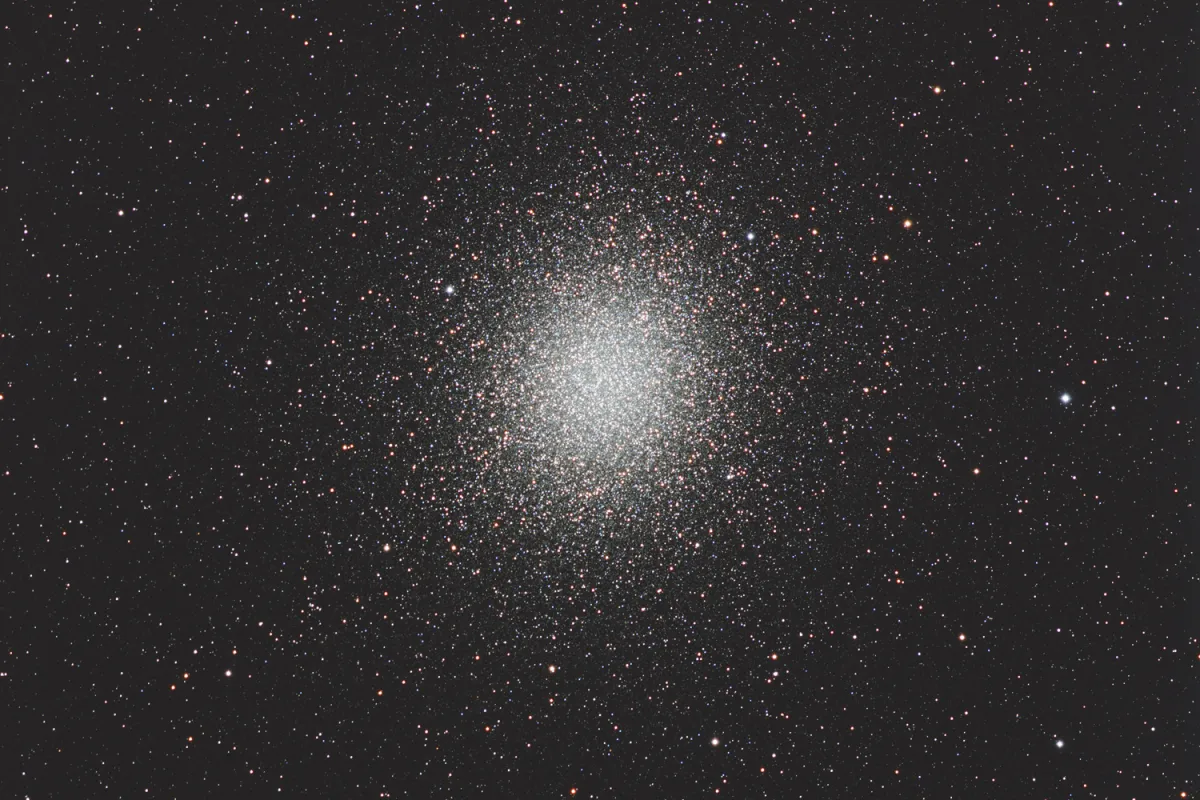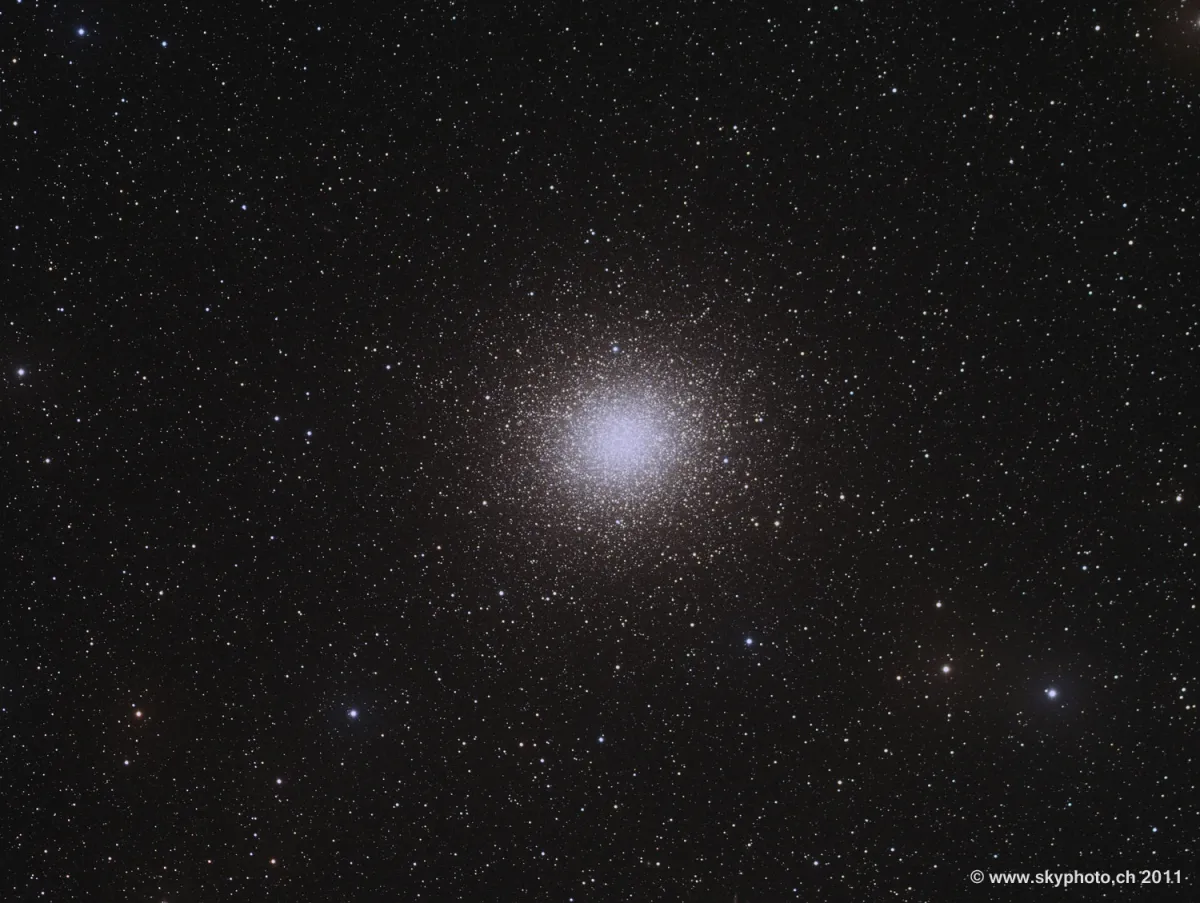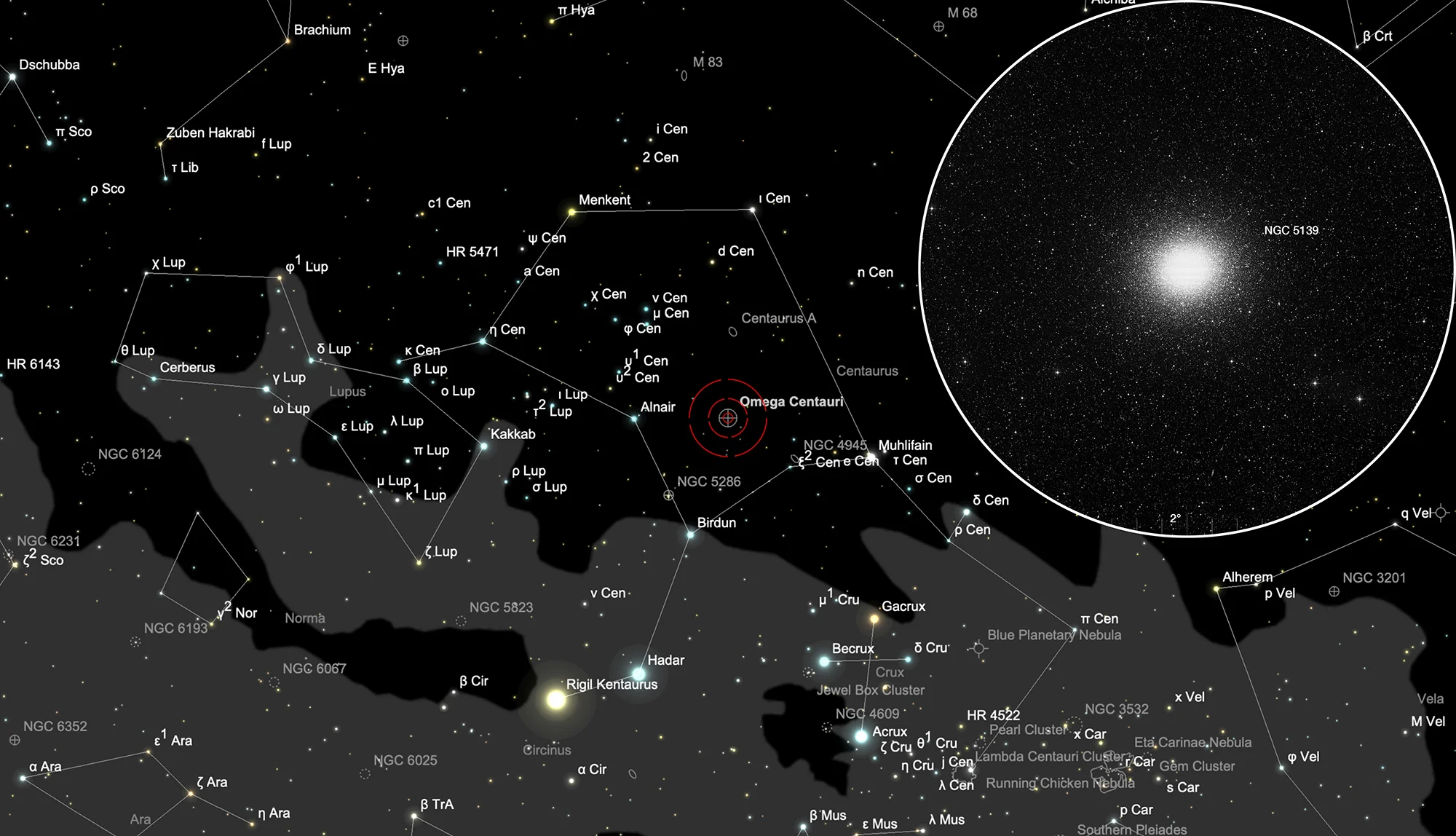Omega Centauri (NGC 5139)


History
Probably the first one who mentioned Omega Centauri was Greek astronomer Ptolemy. He included it as a star in the Almagest, appeared around 150 AD. Johann Bayer catalogued it as a 4th magnitude star (ω) in the early 17th century. In 1676-77 Edmond Halley made the first observation with a telescope from the island of St. Helena. While cataloguing southern stars he included it in a short list of a half-dozen «luminous spots or patches» that he found. Using a half-inch telescope and 8x magnification Nicolas-Louis de Lacaille observed it from Cape of Good Hope and reported: «Naked eye, a 3rd mag star in a fog. Telescope, like a big diffuse comet.» [364]
On 7 May 1826 James Dunlop first resolved the cluster with his 9-inch speculum reflector at Parramatta, New South Wales in Australia. Based on 8 observation he described it as «a beautiful large bright round nebula, about 10' or 12' diameter, easily resolvable to the very centre; it is a beautiful globe of stars very gradually and moderately compressed to the centre; the stars are rather scattered preceding and following, and the greatest condensation is rather north of the centre: the stars are of slightly mixed mags, of a white colour. This is the largest bright nebula in the southern hemisphere.» [50]
Physical Properties
| Designation | NGC 5139 |
| Type | GCL (VIII) |
| Right Ascension (J2000.0) | 13h 26m 47.0s |
| Declination (J2000.0) | -47° 28' 51" |
| Diameter | 55 arcmin |
| Photographic (blue) magnitude | 6.1 mag |
| Visual magnitude | 5.3 mag |
| Metric Distance | 5.200 kpc |
| Dreyer Description | !!!, globular cluster of stars, ω Centauri |
| Identification, Remarks | h 3504; GC 3531; GCL 24; ESO 270-SC11; Omega Cen |
Finder Chart
The globular cluster NGC 5139 is located in the constellation Centaurus and it is visible to the naked eye. At a declination of -47° the object is not visible from Europe. On 14 April it in opposition with the Sun and is therefore highest in the sky at around midnight.
